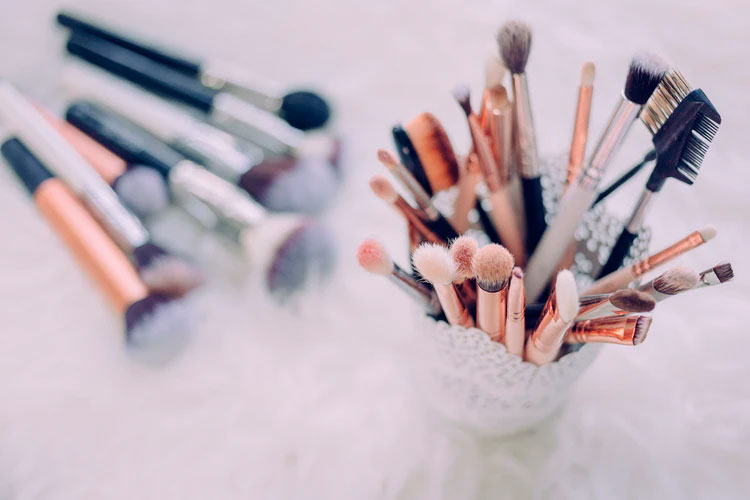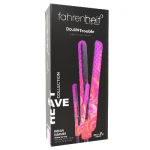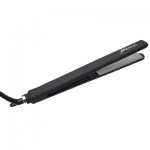Cakey looking skin isn’t always a result of the powder foundation you’re using. Sometimes it’s in the way you apply it. My first powder foundation was a gift. Being that I’m a huge liquid foundation girl, it sat in my makeup collection for months.
Eventually, when my liquid foundation started coming to an end, I pulled it out to give it a try. My first few attempts resulted in a heavy, cakey base. It wasn’t until I learned how to apply powder foundation that I achieved a beautiful, natural finish.
If your skin is looking cakey after applying or you’re just confused about how to use powder foundation, read on.

Prep Your Skin
The first step before applying any kind of makeup is prepping your skin. You need a clean, even base from the start otherwise, the makeup application is going to look sloppy.
So, pull up your vanity mirror and follow these simple step:
-
- Cleanse. Freshen up your face by cleansing it with your favorite skincare products. The cleanser you use needs to be for your skin type – oily, dry, acne-prone, sensitive, etc.
- Tone. Remove that stubborn makeup and even out your skin tone with a quality toner.
- Serum. Only apply a serum if it is already a part of your regular skincare routine. If it is not, skip to the next step (but consider incorporating a serum in the future).
- Moisturizer. It’s important to keep your skin hydrated and protected so go with a light moisturizer with SPF.
After you complete these four steps, let your skin rest. This part is important as it will help your skin absorb the products used. It will also pave the way for the next product: primer.
Choose the Right Foundation
After you’ve primed your skin, you can move on to the main step: applying powder foundation.
I didn’t know this at first, but powder foundation can be found in any shade and skin type. If you have combination skin, you need a foundation that offers breathable coverage that will smooth over any blemishes. If you have oily skin, the right foundation will get that shine under control.
As of color, you need to go with the shade that is closest to your skin color. Also, consider the coverage level that you want and the finish. You can choose between pressed, loose, translucent, or tinted powders.
Here is a quick overview of each:
- Pressed. This is flattened and compressed into a compact. It’s great if you want to build on more makeup.
- Loose. This is just what it sounds like – powder in a jar where particles move freely. This option is perfect if you’re looking to set your concealer or foundation.
- Translucent. This is a sheer powder with zero color. It’s perfect for any skin tone. They set the foundation without providing any extra coverage.
- Tinted. These are very specific to your skin tone. They can work alone or as a setting powder.
Here are some quick tips to help narrow down the process of choosing the coverage for you:
- If you want light coverage go with a loose powder. These are best if you want a sheer finish.
- If you want buildable coverage go with a pressed powder foundation. With one, you’ll be able to go from sheer, full coverage, and everything else in between.
- If you want to minimize redness or even out skin tone go with a full-coverage formula.
- If you have oily skin consider a mattifying powder foundation to keep shine at bay.
- If you’re looking for a dewy finish consider an illuminating powder foundation with a glow baked in.
Now that you have an idea of the foundation you want, let’s go over how to apply it.
The Best Tools For Applying Powder Foundation

The best way to apply powder foundation is with a powder puff, powder brush, or makeup sponge. Each tool has its unique purpose and works better with certain kinds of powders.
Here is a breakdown:
Powder Puff
Powder puffs are made from soft materials. They are commonly used to apply face powder and can be shaped like pads or balls. If you’re using a dry, loose powder, consider this tool. It will help you achieve a flawless matte look thanks to its texture and oil absorption qualities.
Powder Brush
A powder brush offers a non-cakey, sheer finish and is personally my favorite tool when applying powder foundation as it offers the easiest way to apply it. I love using Kabuki style brushes because of how fluffy they are. Their dense bristles also help with the blending process. Brushes work best with pressed powders.
Makeup Sponge
Applying powder foundation with a makeup sponge gives you a full-coverage. I will say that it does use up more product than a brush will. Flat sponges are great for setting and baking while tapered ones are great for setting under eye concealer and foundation. I’d recommend makeup sponges for either pressed or loose powders.
Final Thoughts
Applying powder foundation is easy. I hope this beginners guide has helped you get a better idea of the best way to apply powder foundation. I invite you to give it a try and head over to your nearest beauty store. Be sure to check out ingredients and do some research on which is best for your skin type.
Tried it and still prefer liquid or cream foundation? Check out this beginners guide.


